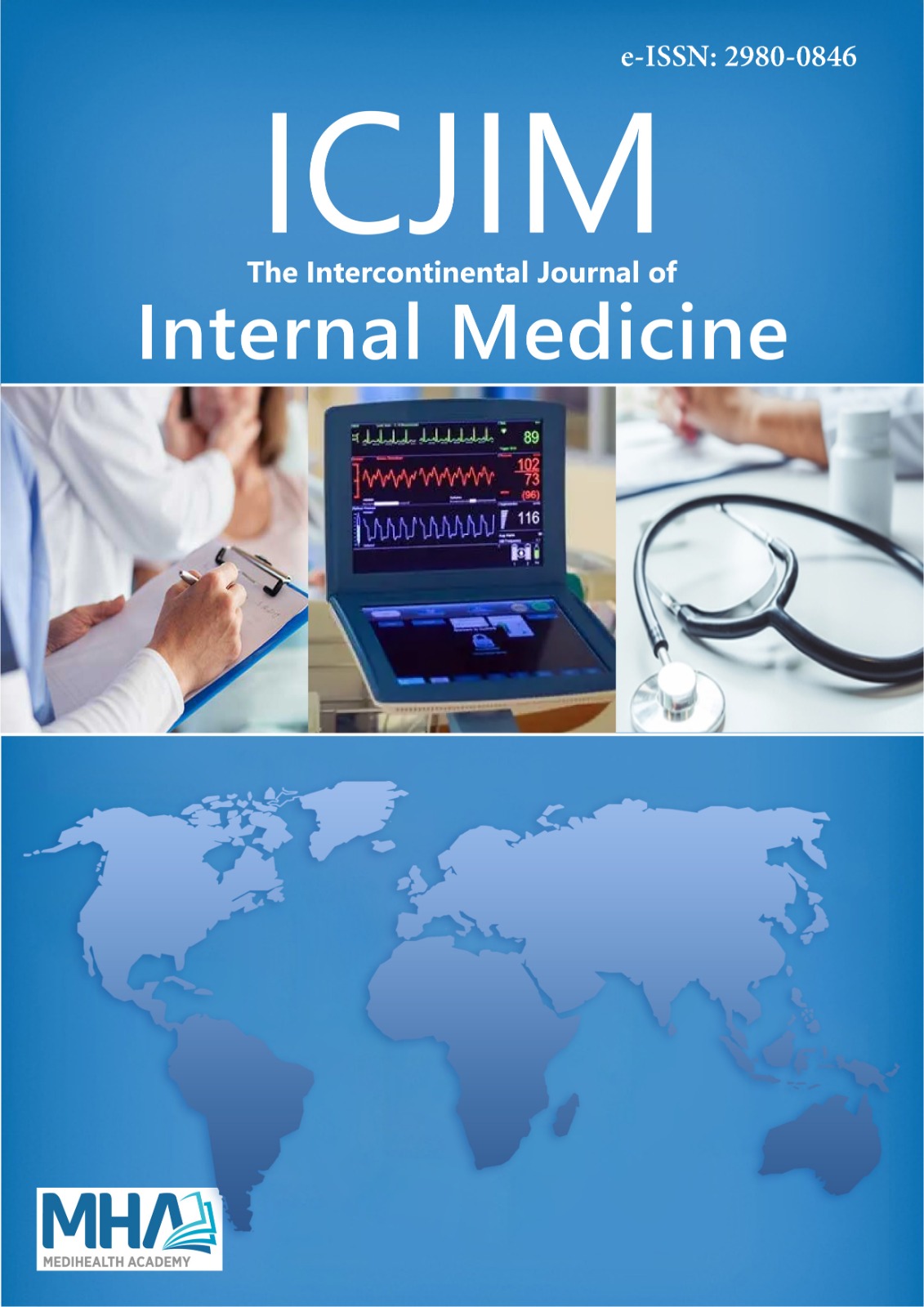1. Şahin S. Kanserde erken tanı ve tarama programları. Ege Tıp Dergisi.2015; 54(Suppl): 41-45.
2. Torre LA, Bray F, Siegel RL, Ferlay J, Lortet-Tieulent J, Jemal A. Globalcancer statistics, 2012. CA: A Cancer J Clinicians. 2015; 65(2): 87-108.
3. Kumar A, Guss ZD, Courtney PT, et alEvaluation of the use of cancerregistry data for comparative effectiveness research. JAMA NetworkOpen. 2020;3(7):e2011985-e2011985.
4. Zeng M, Kikuchi H, Pino MS, Chung DC. Hypoxia activates the K-rasproto-oncogene to stimulate angiogenesis and inhibit apoptosis incolon cancer cells. Plos ONE. 2010; 5(6):e10966.
5. Jiang Y, Mackley H, Cheng H, Ajani JA. Use of K-Ras as a predictivebiomarker for selecting anti-EGF receptor/pathway treatment.Biomarkers in Medicine. 2010; 4(4):535-541.
6. Kim DK, Kang B, Kim OY, et al. EVpedia: an integrated database ofhigh-throughput data for systemic analyses of extracellular vesicles. JExtracellular Vesicles. 2013; 2(1):20384.
7. Lynch HT, Smyrk T, McGinn T, et al. Attenuated familial adenomatouspolyposis (AFAP) a phenotypically and genotypically distinctivevariant of FAP. Cancer. 1995; 76(12):2427-2433.
8. Agrawal D, Newaskar V, Shrivastava S, Nayak PA. Externalmanifestations of Gardner’s syndrome as the presenting clinical entity.Case Reports. 2014; bcr2013200293.
9. Turcot J, Després JP, Pierre FS. Malignant tumors of the central nervoussystem associated with familial polyposis of the colon: report of twocases. Dis Colon Rectum. 1959;2(5):465-468.
10. Junquera LC, Carneıro J. Çeviri Editörü, Aytekin Y, Solakoğlu S, TemelHistoloji, Nobel Tıp Kitabevleri, 2010:225-236.
11. Eaden JA, Abrams KR, Mayberry JF. The risk of colorectal cancer inulcerative colitis: a meta-analysis. Gut. 2001;48(4):526-535.
12. Rothwell PM, Fowkes FGR, Belch JF, Ogawa H, Warlow CP, MeadeTW. Effect of daily aspirin on long-term risk of death due to cancer:analysis of individual patient data from randomised trials. Lancet. 2011;377(9759): 31-41.
13. Kao SC, Pavlakis N, Harvie R, et al. High Blood Neutrophil-to-lymphocyte ratio ıs an indicator of poor prognosis in malignantmesothelioma patients undergoing systemic therapy systemicinflammation in malignant mesothelioma.Clin Cancer Res.2010;16(23): 5805-5813.
14. Sakin A, Sahin S, Sakin A, et al. Mean platelet volume and plateletdistribution width correlates with prognosis of early colon cancer. JBUON. 2020; 25(1): 227-239.
15. Lin MS, Huang JX, Zhu J, Shen HZ. Elevation of platelet count inpatients with colorectal cancer predicts tendency to metastases andpoor prognosis. Hepato-gastroenterol. 2012; 59(118): 1687-1690.
16. Kusumanto YH, Dam WA, Hospers GA, Meijer C, Mulder NH. Plateletsand granulocytes, in particular the neutrophils, form importantcompartments for circulating vascular endothelial growth factor.Angiogenesis. 2003; 6(4): 283-287.
17. Gu M, Zhai Z, Huang L, et al. Pre-treatment mean platelet volumeassociates with worse clinicopathologic features and prognosis ofpatients with invasive breast cancer. Breast Cancer. 2016; 23(5): 752-760.
18. Walsh SR, Cook EJ, Goulder F, Justin TA, Keeling NJ. Neutrophil-lymphocyte ratio as a prognostic factor in colorectal cancer. J SurgOncol. 2005; 91(3): 181-184.
19. Chua W, Charles KA, Baracos VE, Clarke SJ. Neutrophil/lymphocyteratio predicts chemotherapy outcomes in patients with advancedcolorectal cancer. British J Cancer. 2011; 104(8): 1288-1295.
20. Carriquiry LA, Piñeyro A. Should carcinoembryonic antigen be used inthe management of patients with colorectal cancer? Dis Colon Rectum.1999; 42(7): 921-929.
21. Li MX, Liu XM, Zhang XF, et al. Prognostic role of neutrophil-to-lymphocyte ratio in colorectal cancer: A systematic review and meta-analysis. Int J Cancer. 2014; 134(10): 2403-241.
22. Boonpipattanapong T, Chewatanakornkul S. Preoperativecarcinoembryonic antigen and albumin in predicting survival inpatients with colon and rectal carcinomas. J Clin Gastroenterol. 2006;40(7): 592-595.
23. Tumay V, Guner OS. The utility and prognostic value of CA 19-9and CEA serum markers in the long-term follow up of patients withcolorectal cancer. A single-center experience over 13 years. Ann ItalChir. 2020: 91(5): 498-503.
24. Gnanasampanthan G, Elsaleh H, Mccaul K, Iacopetta B. Ki-rasmutation type and the survival benefit from adjuvant chemotherapy inDukes’ C colorectal cancer. J Pathol. 2001; 95(5): 543-548.
25. Olariu A, Bartoş A, Bartoş D, et al. Evaluation of prognostic factors forcolon cancer. Chirurgia (Bucharest, Romania: 1990). 2012; 107(2): 174-179.
26. Chapuis PH, Dent OF, Fisher R, et al. A multivariate analysis of clinicaland pathological variables in prognosis after resection of large bowelcancer. J British Surg. 1985; 72(9): 698-702.
27. Moghimi-Dehkordi B, Safaee A, Zali MR. Prognostic factors in 1,138Iranian colorectal cancer patients. Int J Colorectal Dis. 2008; 23(7): 683-688.
28. Küçüköner M, Kaplan MA, İnal A, et al. Kolorektal kanserler: tekmerkez 12 yıllık sonuçları. J Clin Exp Invest. 2013; 4(2): 208-212.
29. Kutlu R, Demirbaş N, Börüban MC, Güler T. Sigara içmeye atfedilebilenkanser türleri ve sosyodemografik özellikleri.Türk Onkoloji Derg.2014;29(3): 81-88.
30. Sarı R, Durak D, Yazıcıoğlu MÖ, Gürer A. Kolon kanserlerindebilgisayarlı tomografinin lenf nodu tespitindeki rolü. Bozok Tıp Dergisi.2019; 9(2): 48-51.
31. Benedek Z, Boér ST, Bauer O, et al. An overview of five-year survivalin rectal cancer in relation to lymph node status. Chirurgia (Bucharest,Romania: 1990). 2020; 115(6): 747-755.
32. Ortega PM, Cienfuegos JA, Baixauli J, et al. Prognostic significance oflymph node count in high-risk node-negative colon carcinoma.Rev EspEnferm Dig. 2020;112: 609-614.

